75 new species discovered in Hainan rainforest park

The Hainan Tropical Rainforest National Park, a global biodiversity hot spot, covers a total area of 4,269 square kilometers, about one eighth the total land area of Hainan Island. In the three years since the park was established, a total of 75 new plant, animal, and fungi species have been discovered within.
Liu Daye, a forest ranger working at the Nanyan Station in the Jianfengling area of the park. He’s been patrolling the rainforest for over 20 years, and recently has made new discoveries every year. Liu spoke of a hole that was discovered in October with ant nests and other creatures inside that had been fed on by a pangolin. The size of the hole, measuring around 14 to 15 centimeters wide, shows that the pangolin may weigh around 3-4 kg.
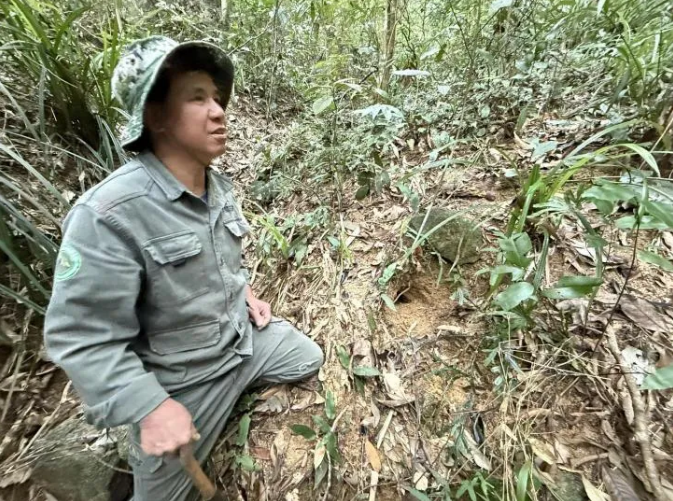
Liu Dayi demonstrated how the pangolin hole was found. (Photo by Wang Zehua)
Before the establishment of the Hainan Tropical Rainforest National Park, there were no traces of the pangolin in the Jianfengling area, but now their images are often captured by infrared cameras. Technical analysis has produced a map of the habitat of the pangolin in the Jianfengling area, and their numbers are on the rise.
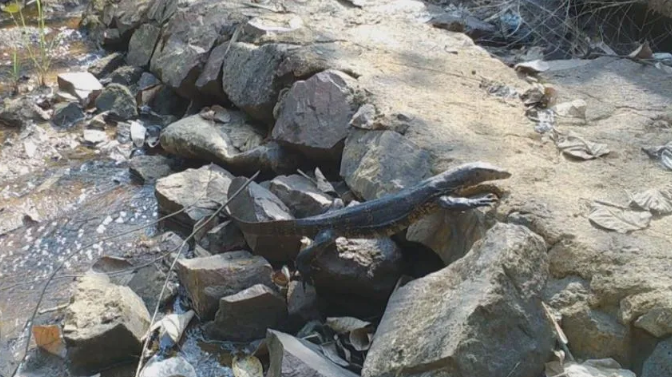
Water monitor. (Photo by Hainan Tropical Rainforest National Park)
The pangolin is not the only species that’s been spotted here. The water monitor, which once roamed the forests of Hainan, has once again began to appear frequently in different parts of the Hainan Tropical Rainforest National Park.
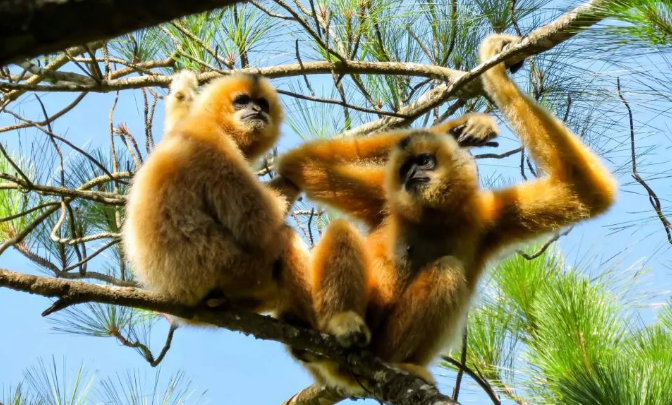
Hainan Gibbon. (Photo by Hainan Tropical Rainforest National Park)
The population of the Hainan Gibbon, a flagship species serving as an indicator of the integrity and health of Hainan’s tropical rainforest ecosystem, has risen from just 30 individuals living in four family groups in 2019 to the current total of 42 individuals living in seven family groups. For this species, which takes 2-3 years to reproduce, this is an astonishing increase.
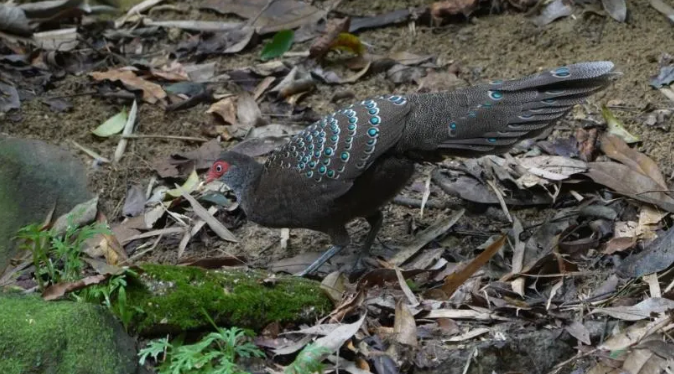
Hainan Peacock-pheasant. (Photo by Hainan Tropical Rainforest National Park)
Zhou Yadong, Chief Engineer of the Forestry Department of Hainan Province, said “We have found 75 new species of animals, plants, fungi, and more. This shows that we are getting better at protecting local species.”
The Hainan tropical rainforest is the densest, most bio-diverse, best preserved, largest contiguous continental island tropical rain forest in China. It is a treasure trove of tropical biodiversity and genetic resources, giving Hainan Island an ecological security barrier, representing China’s rich natural landscape, and having global wildlife protection significance. According to Zhou Yadong, in recent years the park has completed Phase 1 of a comprehensive national park resource survey and monitoring project, keeping records of national key protected species such as the swiftlet, pangolin, water monitor, Hainan partridge, and Hainan peacock-pheasant. The frequent discovery of new species in the park shows the continued improvement of park construction, management, and scientific research levels.
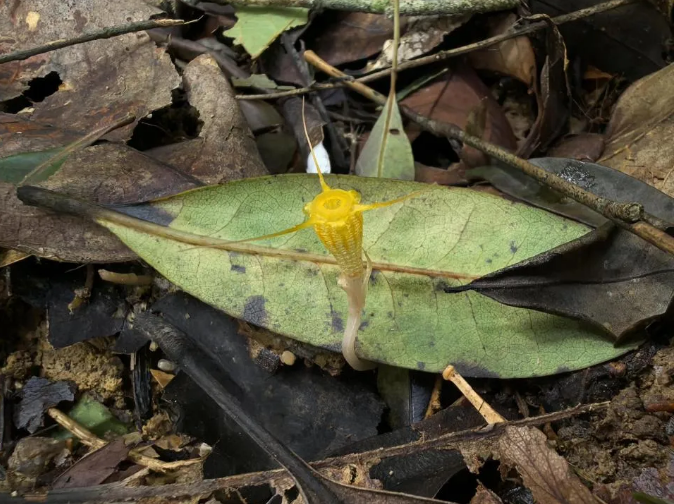
A new plant species (Scientific name: Thismia jinzun) was discovered in the Jianfengling National Nature Reserve in south China's Hainan Province. (Photo by Lu Chunyang)

Office of the Hainan Free Trade Port Working CommitteeNo. 69 Guoxing Avenue, Meilan District, Haikou City, Hainan Province, 570203, China

hnshgb_xchch@sina.com
Contact Us
- Latest News
- Video News
- Specials
- Press Release
- Upcoming Events
What's New in Hainan
- Industrial Park
- Tax
- Trade
- Investment
- Entry & Exit
- Finance
Invest in Hainan
- Weather
- Transportation
- Health Care
- Attractions & Food
- Fitness & Sports
- Arts & Culture
Live in Hainan
- Copyright © 2020 Hainan Free Trade Port
- Qiong ICP 19005356
- All Rights Reserved





